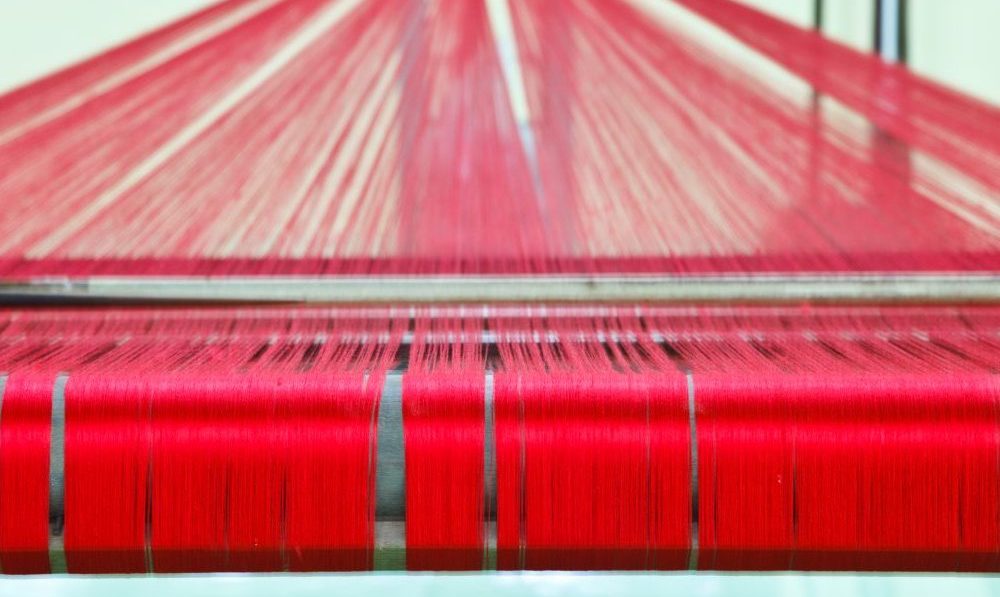
Lanificio Cangioli – Fabrics since 1859
Interview with Vincenzo Cangioli
LANIFICIO CANGIOLI 1859 SPA – Cangioli Woolen Mill is a very historic textile company in Prato created in 1859. It produces and sells textiles on 4 major collections: Cangioli (woman’s total look), Ad Hoc (women’s total look), Fabrica (shirts, suits and coats for men), Sushi Shirt (for shirts only).
The textile district in Prato today is very different from 30 years ago. In fact, several historical companies shut down, while a lot of little – medium companies run by Chinese people started their businesses. Datasys Magazine already discussed this theme through the interview with Professor Lorenzo Magnolfi (“The Chinese textile in Prato, a business 30 years old” – Datrasys Magazine 2018, n 1).
As the president of an old textile company in Prato, which kept a highquality production level and is still Italian, what do you think about Chinese businessmen in Prato and also about the district change over the last 10 years?
As far as the competition is concerned, Chinese textile companies don’t really affect us, because they act only with the packaging and the final fashion product for a very low target audience, usually on the edge of the law. By contrast, it is worth noting the competition of producers in China: indeed, when all the custom barriers have been removed, all European countries have been invaded by Chinese Textiles. The impact from the very first Nineties was very huge for Italy and for all Europe, but things are changing for at least two reasons.
First of all labor cost has raised also in China and it makes the production there less cheaper, considering also the shipment frights.
The second reason deals with the long shipping times from China to the Western Countries, which do not match with the very quickly fulfilment of purchase orders, required in the textile world. Nowadays, China is much less scary because Turkey has become a very fierce competitor: it’s one thing to have 5 weeks to delivery from China, quite another to deliver your goods in five days by truck. That said, the textile district in Prato (the historical one, made by companies like ours, not the Chinese ones) is stable since many years and it is quietly recovering. In fact, the historical district has halved and during the last 30 years it lost 50% of its companies. Luckily this leak has stopped and today we can finally look at the future in a positive way.
In a recent interview for the newspaper Il Tirreno you stated: “we have a big problem in human resources: there are no workers, technicians and commercial agents. During this period, we are looking for workers specialized on weaving and finishing, but there is a big gap in terms of professional education.” This problem comes back repeatedly on Datasys Magazine. For instance, the businessman Flavio Nava, from the company Tricot Chic, stated (Datasys Magazine 2019, number 1): “Textile industry work processes require long delay of time and a lot of dexterity. It is important to remark that our shirts cannot just be sewed, but they also need to be finished using needle and thread. Actually, there are very few 18 years old Italian girls that are able to do this kind of job. Today we are working with many schools and hiring many interns, but they haven’t received a specific education for this kind of task.” Flavio Berto, from Berto Textile Company stated (in Datasys Magazine 2018, number 2): “It has been for almost 20 years that people claim the death of handcraft and the importance of service industry (in Europe and Italy too). The result is that everyone wants to live in the service world (consultant, commercial agents, insurers, etc.) and nobody wants to work in factories. But it is important to underline that our textile production heirs a lot of people and helps a lot of families, while some startup companies that operate in the marketing or consultancy field only have 3 or 4 employees. Is this the future we are hoping for?”. Now, how would you define the cultural roots at the basis of these problems and what could we do to change this situation?
This problem should be assessed looking at what textile companies have chosen to do over the years. At some stage, because of the economical crisis and the need to save money, many of them stopped investing in young people and in their skills training. So, they always replaced old employees, retired or fired, with other professionals, already well experienced. This pattern of behavior worked for a certain period, but it has come to an end soon and a shortage in the workforce available came up. The main reason is that companies haven’t been investing in a proper skills education and textile vocational schools have an important fall in enrollments. Because of this dramatic reduction of workers, kids and their families living in the historical textile districts, stopped looking at this industry as an attractive one. Therefore, this situation created a sort of loop where good textile firms want to hire people, but they cannot find well trained staff. It is certainly a serious issue to deal with, because the strength of Italian textile companies are people and their skills, not the machineries (which can be built all over the world). In order to change this situation companies should reinvest in young people professional education and the retirement of many employees through the so called “quota 100”, a retirement law recently introduced by the Italian government, becomes an important step to speed up this turnaround. Secondly, I really believe in a vocational schools’ renewal and in a new sense of textile field’s attraction by kids and their families. I am very optimistic, and I also think that this change is already taking place. For example, in Scandicci (Florence), the high school Polimoda, famous for high education in fashion design is attracting many kids and also the textile classes in other technical high schools are growing again, with many new entries. Young people are understanding that textile manufacturing is a completely new field, which can keep old traditions alive, but declines them in an innovative way. Finally, it can be a much more appealing area than other careers in marketing or services.
In the Italian textile industry, companies which want to stay successfully on the market, focus on their product quality. Which are the strengths and main features of your collections?
In the last three years we doubled our turnover and our production volume. Cangioli Woolen Mill is now at the beginning of a great growing season. I think that our strengths can be summarized in 4 main points:
- PROPOSAL, which means working a lot in innovation, creativity, customer relationship management and in all those features which can differentiate high level Made in Italy from Asian competitors. In fact, they just deliver an item already packed.
- CUSTOMIZATION, which means being able to fulfill all the client’s specific needs in order to differentiate the customized final product from the standard one.
- SPEED, today is very important for all those textile companies willing to stay on the market. Nowadays you have to quickly fulfill your customers’ needs because the market requires very fast response time, or you lose a lot of your market shares. This can be either a negative or a positive feature.
- SUSTAINABILITY and the ecological engagement are key points in the textile world and every businessman should take them into consideration.
Cangioli Woolen Mill’s products are sold through a net of commercial agents and resells, located in Europe, United States, China and Japan. How important is the exportation for you and which are the most important or the most “uncharted” markets?
We have many high fashion items and we mainly address to the markets where we can find the type of target which can appreciate this products. The main countries are Usa, part of the Middle East, Japan, South Corea and China. On the other hand, different areas don’t have an highly developed sensitivity to appreciate our proposals. It is not a matter of money: indeed, there are a lot of rich people all over the world, but some of them don’t have the right “fashion taste” and are not able to really appreciate the sophistication of a certain garment. As far as the exportation quote is concerned, we can say that today it covers 70 – 75% of our revenue and our Italian clients are mainly exporters.
Cangioli Woolen Mill chooses Datatex for the software component (Now ERP) and Dotwit (Datasys Network’s Group & Datatex web division) for the websites which show and tell all your collections. How is it important nowadays to have high profile online showcases?
The web site is fundamental for us, in order to inform, strengthen our own image and find new potential clients. However, it is important to underline that we only work in the Business to Business field, producing fabrics for other companies and it is pointless for us to make an undifferentiated type of advertising. Instead we try to attract an expert target, using websites and social media: we don’t care about the number of visitors, but the professional profile of our followers is more important. To achieve that, we always try to keep a simple communication, careful and vailed: we don’t want to post too much things online because we also don’t want to reveal much things to our competitors.

